Korte ski's stelen de show van lange ski's - en dat is niet zonder reden. Jarenlang dachten mensen dat langere ski's een must waren voor expert-skiërs, omdat ze stabiliteit en snelheid boden. Maar dat geloof? Dat is achterhaald. Moderne ontwerpen geven prioriteit aan controle en wendbaarheid, waardoor korte ski's een game-changer zijn voor gevorderde skiërs.
Dit is het punt:
- Lange ski's zijn moeilijk te draaien, lastig te hanteren in krappe ruimtes en een gedoe om te vervoeren.
- Korte ski's bieden scherpere bochten, betere controle en werken op verschillende terreinen. Bovendien zijn ze licht en gemakkelijk mee te nemen.
Merken zoals Snowfeet* leiden deze verschuiving, met kortere ski's (en skiblades) die precisie en plezier terugbrengen in het skiën. Of je nu door buckels snijdt of steile hellingen navigeert, kortere ski's maken het makkelijker - en leuker.
Klaar om je uitrusting te heroverwegen? Lees verder om te zien waarom korte ski's de betere keuze zijn voor experts.
Korte versus lange ski's - het ECHTE verschil
Problemen met lange ski's voor expert-skiërs
Terwijl korte ski's snelle wendbaarheid bieden, kunnen traditionele lange ski's een hoop uitdagingen met zich meebrengen. Laten we duiken in waarom lange ski's van bekende merken niet altijd de beste keuze zijn voor expert-skiërs.
Moeilijk te draaien en te beheersen
Lange ski's hebben een grotere draaicirkel, wat betekent dat ze langzamer van richting veranderen. In smalle buckelvelden kan dit snelle aanpassingen bijna onmogelijk maken. Expert-skiërs, vooral op steil of lastig terrein, hebben ski's nodig die direct reageren op subtiele bewegingen. Bovendien kan de extra lengte bij onvoorspelbare sneeuwomstandigheden soms ervoor zorgen dat de ski onverwacht een kant pakt, waardoor je balans verstoord wordt en de rit minder stabiel is. Deze controleproblemen leiden natuurlijk tot een ander probleem - transport.
Zwaar en moeilijk te vervoeren
Laten we eerlijk zijn: lange ski's zijn lastig te verplaatsen. Ze passen niet in de meeste kofferbakken en je hebt waarschijnlijk een oversized skitas nodig om ze te vervoeren. Zelfs thuis voelt het vinden van een plek om ze op te bergen soms als een potje Tetris. En terwijl het transport al een gedoe is, begint het echte probleem pas als je ze meeneemt naar gevarieerde hellingen.
Moeilijk te hanteren op verschillende hellingen
Lange ski's schitteren op brede, geprepareerde pistes, maar hoe vaak blijven ervaren skiërs daar nou echt? Wanneer je steile, smalle couloirs of onvoorspelbaar terrein betreedt, werken lange ski's vaak tegen je. In plaats van zich aan te passen aan de helling, eisen ze constante aanpassingen van jou, waardoor ze minder veelzijdig zijn voor avontuurlijke skiërs die diverse omstandigheden willen trotseren.
Hoe korte ski's en skiblades deze problemen oplossen
Nu we de uitdagingen van traditionele lange ski's hebben besproken, duiken we in hoe korte ski's en skiblades deze problemen aanpakken. Het gaat niet alleen om het inkorten van de lengte - het gaat om het herdefiniëren van hoe ervaren skiërs omgaan met de berg.
Betere controle en snelle bochten
Korte ski's veranderen het spel volledig als het gaat om wendbaarheid. Met een kleinere draaicirkel laten skiblades skiërs scherpe, snelle richtingsveranderingen maken die lange ski's simpelweg niet aankunnen. De kortere lengte vermindert de oppervlakteweerstand tijdens bochten, waardoor je direct feedback en controle krijgt bij zelfs de kleinste gewichtsverplaatsing.
Neem bijvoorbeeld Snowfeet* skiblades. Deze variëren van 65 cm tot 99 cm en bieden de precisie die nodig is voor technisch terrein. Vergelijk dat met traditionele ski's, die vaak 170-190 cm meten, en je ziet waarom kortere ski's uitblinken in het maken van strakke S-bochten door buckels. Bovendien zorgt hun compacte ontwerp voor een betere balans - er is minder hefboomwerking tegen je wanneer je snel moet bijsturen.
Edge-overgangen? Ze zijn soepel en razendsnel. Terwijl lange ski's vertrouwen op stabiliteitskenmerken die de reactietijd kunnen vertragen, draait het bij Snowfeet* skiblades allemaal om directheid. Dit maakt ze de favoriete keuze voor steile hellingen waar beslissingen in een fractie van een seconde cruciaal zijn. Hun wendbaarheid overtreft traditionele ski's, waardoor je het vertrouwen krijgt om uitdagend terrein moeiteloos aan te pakken.
Veelzijdig in alle sneeuwcondities
Korte ski's gedijen in alle soorten sneeuw. Of het nu poeder is, geprepareerde pistes of onvoorspelbaar gemengd terrein, Snowfeet* skiblades passen zich moeiteloos aan.
In diepe poeder worstel je niet om enorme skitips boven water te houden. Op harde pistes betekent het kleinere oppervlak snellere kantenwerking en preciezer carven. Zelfs als de omstandigheden wisselen - ijs het ene moment, natte sneeuw het volgende - reageren korte ski's snel, in tegenstelling tot lange ski's die vaak geoptimaliseerd zijn voor slechts één soort terrein.
Nog een opvallend kenmerk? Compatibiliteit met schoenen. Traditionele setups binden je aan dure skischoenen, maar Snowfeet* producten werken met gewone winterschoenen, snowboardboots of skischoenen. Deze flexibiliteit laat je de juiste schoenen kiezen voor de omstandigheden van de dag in plaats van vast te zitten aan één optie.
Makkelijk te dragen en op te bergen
Gemak telt, zelfs voor ervaren skiërs. Snowfeet* producten lossen het probleem van het vervoeren van traditionele ski's op dankzij hun compacte ontwerp. Bijvoorbeeld, Snowfeet* Mini Ski Skates zijn slechts 38 cm lang en kunnen in een rugzak passen, terwijl zelfs hun langste korte ski's (120 cm) veel makkelijker te hanteren zijn dan de 1,8 meter lange traditionele opties.
Deze draagbaarheid opent nieuwe mogelijkheden. Ga je de backcountry in? Het lichte ontwerp maakt wandelen naar afgelegen plekken minder vermoeiend. Wil je snel even skiën? Geen gedoe met zware uitrusting.
Opslag is ook een fluitje van een cent. Of je nu in een klein appartement, een volle auto of een knusse skihut bent, Snowfeet* producten nemen weinig ruimte in beslag. Traditionele ski's kunnen 7-9 kilo wegen en meer dan 1,8 meter lang zijn, maar Snowfeet* uitrusting levert dezelfde sensatie zonder de opslagproblemen of ingewikkelde transportlogistiek.
sbb-itb-17ade95
Snowfeet* vs Traditionele Ski- en Snowboardmerken
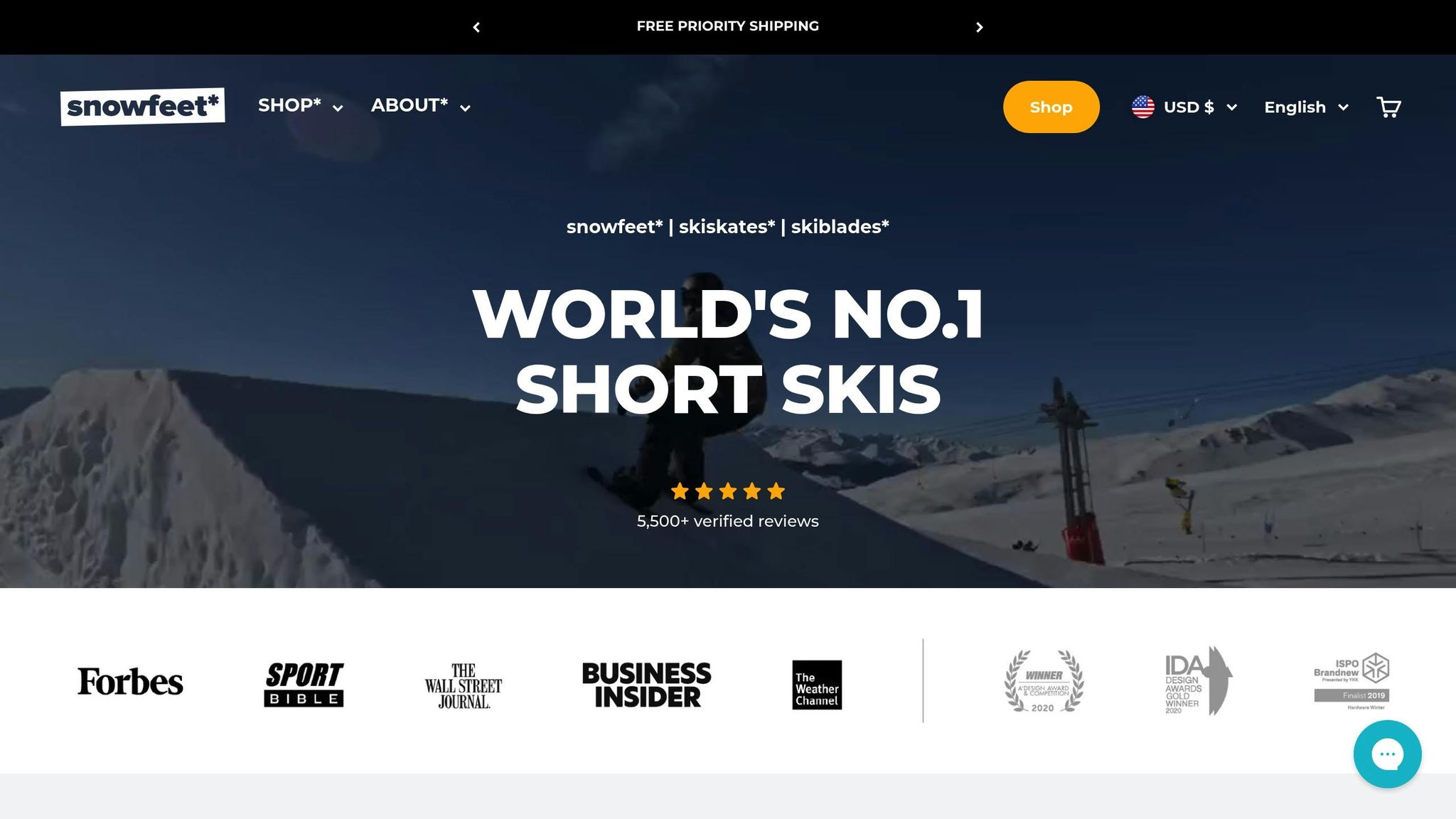
Wanneer je Snowfeet* producten vergelijkt met traditionele ski- en snowboarduitrusting, zijn de verschillen opvallend. Legacy-merken hebben lang geloofd dat langere ski's de gouden standaard zijn voor expertprestaties. Snowfeet* draait dat idee echter om met kortere, lichtere uitrusting die wendbaarheid en controle boven omvang stelt. Het gaat niet alleen om grootte - het gaat om het heruitvinden van wat skiën kan zijn.
Prestatievergelijkingsgrafiek
Hier is een snelle blik op hoe Snowfeet* zich verhoudt tot traditionele ski's en snowboards:
| Kenmerk | Snowfeet* Skiblades | Traditionele lange ski's | Snowboards |
|---|---|---|---|
| Draaivermogen | Uitstekend | Gemiddeld | Gemiddeld |
| Gewicht | Zeer licht | Zwaar | Zwaar |
| Makkelijk te leren | Hoog | Gemiddeld/laag | Gemiddeld |
| Flexibiliteit (terrein) | Hoog | Gemiddeld | Gemiddeld |
| Draagbaarheid | Uitstekend | Slecht | Slecht |
| Compatibiliteit met boots | Meerdere types | Alleen ski boots | Snowboardboots |
| Prestaties in diepe sneeuw | Gemiddeld | Uitstekend | Goed |
Hoewel traditionele ski's uitblinken in diepe sneeuw, domineert Snowfeet* in bijna elke andere categorie. Als je een ervaren skiër bent die waarde hecht aan veelzijdigheid en gebruiksgemak, is de keuze vrij duidelijk.
Een ander opvallend kenmerk? Snowfeet* werkt met verschillende soorten schoeisel, waaronder gewone winterschoenen, snowboardboots en ski boots. Vergelijk dat met traditionele setups die vaak dure ski boots vereisen (denk aan $300–$800), en het is makkelijk te zien waarom Snowfeet* voor velen een game-changer is.
Wat Maakt Snowfeet* Anders?
Buiten de cijfers brengt Snowfeet* een frisse benadering van wintersport. Traditionele skimerken richten zich vaak op stabiliteit, maar Snowfeet* geeft prioriteit aan responsiviteit en wendbaarheid. Dit maakt ze perfect voor skiskaten - een hybride sport die skiën en schaatstechnieken combineert. Het is een moderne twist die creatieve mogelijkheden opent die traditionele uitrusting gewoon niet kan evenaren.
Een van de grootste voordelen? Je kunt van lopen naar skiën gaan zonder van schoenen te wisselen. Geen gesjouw meer met extra uitrusting. Freestyle skiërs houden van de extra wendbaarheid voor tricks, en reizigers waarderen dat Snowfeet* skiblades gemakkelijk in standaard bagage passen - geen torenhoge bagagekosten meer voor te grote uitrusting.
Het lichte ontwerp maakt ook een merkbaar verschil op de pistes. Traditionele ski's kunnen je na een lange dag uitputten, waardoor je benen aanvoelen als jelly. Snowfeet* minimaliseert die vermoeidheid, zodat je door kunt gaan zonder in te leveren op prestaties of comfort.
Snowfeet* daagt de ouderwetse overtuiging uit dat langere ski's per definitie beter zijn voor stabiliteit en snelheid. In plaats daarvan richten ze zich op het skiën leuker, toegankelijker en flexibeler maken voor iedereen. Of je nu de pistes op gaat voor trucs, reizen, of gewoon een makkelijkere rit, Snowfeet* herdefiniëren wat het betekent om van wintersport te genieten.
Wat ervaren skiërs zeggen over korte ski's
Ervaren skiërs die Snowfeet* producten hebben geprobeerd, zijn enthousiast over het verschil. Veel doorgewinterde professionals zijn het erover eens: kortere ski's kunnen je prestaties - en plezier - naar een heel nieuw niveau tillen.
Beoordelingen van ervaren skiërs
Gevorderde skiërs benadrukken hoe Snowfeet* een geheel nieuw niveau van responsiviteit en controle brengen. De snelle feedback en precieze aanpassingen maken scherpere technieken en dynamischer skiën mogelijk.
Wat opvalt in hun feedback? Snowfeet* hebben hun liefde voor skiën nieuw leven ingeblazen. Veel experts zeggen dat het voelt alsof ze de sport opnieuw ontdekken. De extra wendbaarheid opent creatieve lijnkeuzes en technische uitdagingen die langere ski's simpelweg niet aankunnen. Het is een game-changer voor wie graag grenzen verlegt.
Een ander groot voordeel is veelzijdigheid. Traditionele ski-uitrusting vereist vaak het wisselen van gear voor verschillende omstandigheden of terreinen. Snowfeet* kunnen alles aan - of je nu over geprepareerde pistes cruiset of terreinparken verkent. Dit betekent minder tijd zorgen maken over uitrusting en meer tijd om je op het skiën te concentreren.
Freestyle skiërs zijn vooral grote fans. Het lichte, compacte ontwerp van Snowfeet* maakt trucs makkelijker te landen en rotaties vloeiender. Voor degenen die werken aan hun volgende grote move, is deze extra controle en stabiliteit onbetaalbaar.
En het gaat niet alleen om prestaties. Veel experts omarmen kortere ski's vanwege de lifestylevoordelen die ze bieden.
Meer ervaren skiërs stappen over op korte ski's
De verschuiving naar kortere ski's wint aan kracht onder gevorderde skiërs, wat een opvallende verandering in de skiwereld markeert. Waarom? Omdat ze zowel presteren als praktisch zijn.
Een grote aantrekkingskracht is reisgemak. Frequente reizigers kennen de last van het slepen met oversized skitassen en het betalen van extra kosten. Snowfeet* passen in standaard bagage, waardoor reizen met uitrusting een fluitje van een cent wordt. Voeg dat toe aan hun hoge prestaties, en het is makkelijk te begrijpen waarom steeds meer experts de overstap maken.
De leercurve voor ervaren skiërs is verrassend snel. De meesten passen zich aan binnen slechts een paar afdalingen, en ontdekken dat hun vaardigheden naadloos overgaan op kortere ski's. Het is een soepele overgang die hen niet tegenhoudt om van de pistes te genieten.
Een andere reden waarom experts geïnteresseerd zijn? De opkomst van skiskating, een hybride van skiën en schaatsen die Snowfeet* helpt pionieren. Deze nieuwe discipline biedt frisse uitdagingen en groeimogelijkheden, vooral voor degenen die traditionele skiën al onder de knie hebben. Het is als het ontgrendelen van een geheel nieuwe manier om van de bergen te genieten.
Er hangt ook een sterke community vibe rond Snowfeet*. Skiërs die de overstap maken, worden vaak gepassioneerde voorstanders en verspreiden het woord onder vrienden en mede-enthousiastelingen. Wanneer gerespecteerde experts in de skiwereld kortere ski's aanbevelen, weegt dat zwaar - en helpt het meer skiërs het potentieel te zien.
Misschien wel de meest overtuigende reden waarom experts Snowfeet* omarmen, is de manier waarop ze de passie voor de sport nieuw leven inblazen. Na jaren of zelfs decennia op traditionele lange ski's, herinneren het speelse gevoel en de precieze controle van korte ski's hen eraan waarom ze ooit verliefd werden op het skiën. Deze hernieuwde opwinding leidt vaak tot meer tijd op de piste en een diepere waardering voor de sport in het algemeen.
Conclusie: Korte ski's zijn beter voor ervaren skiërs
Ervaren skiërs hebben geen lange ski's nodig om op hun best te presteren. Sterker nog, kortere ski's - of skiblades zoals die van Snowfeet* - bieden ongeëvenaarde controle, scherpere wendbaarheid en een niveau van plezier dat lange ski's simpelweg niet kunnen leveren.
Lange ski's zorgen vaak voor onnodige hoofdbrekens bij gevorderde skiërs. Ze zijn moeilijker te draaien, lastig te vervoeren en maken het aanpassen aan verschillend terrein uitdagender. Aan de andere kant bieden korte ski's precies wat ervaren skiërs verlangen: precisie, snelle respons en de mogelijkheid om geprepareerde pistes, terrain parks, buckels en zelfs poedersneeuw aan te pakken - allemaal zonder van uitrusting te hoeven wisselen.
Snowfeet* heeft het traditionele ski-ontwerp op zijn kop gezet. Ze hebben aangetoond dat het lang bestaande geloof in "langere ski's betekent betere prestaties" achterhaald is. In plaats daarvan bewijzen hun kortere, lichte ski's dat minder meer kan zijn. Je krijgt uitrusting die gemakkelijk te hanteren is, in standaard bagage past (geen oversized skitassen nodig!), en het reizen een stuk eenvoudiger maakt. Bovendien is de leercurve minimaal - de meeste ervaren skiërs voelen de voordelen van verbeterde controle en wendbaarheid al na een paar afdalingen.
Maar naast praktisch nut brengen korte ski's de vreugde van het skiën terug. Veel ervaren skiërs zeggen dat overstappen op Snowfeet* voelt als opnieuw verliefd worden op de sport.
Veelgestelde vragen
Zijn korte ski's beter dan traditionele lange ski's voor ervaren skiërs?
Korte ski's, zoals Snowfeet* skiblades, brengen een heel nieuw niveau van plezier en controle voor ervaren skiërs. Hun lichte ontwerp en snelle responsiviteit maken scherpe bochten een fluitje van een cent, terwijl ze ook vermoeidheid verminderen. Ze zijn perfect voor freestyle moves en het navigeren door krappe plekken, wat een speelse twist geeft aan je tijd op de piste.
Aan de andere kant zijn traditionele lange ski's geweldig voor stabiliteit bij hoge snelheden en het aanpakken van agressieve afdalingen. Maar laten we eerlijk zijn - ze kunnen lomp aanvoelen en minder aanpasbaar zijn in krappe ruimtes of bij wisselend terrein. Snowfeet* keert het verhaal om en bewijst dat kortere ski's meer vrijheid, precisie en opwinding kunnen bieden, zelfs voor ervaren professionals.
Waarom kiezen voor Snowfeet* producten in plaats van traditionele ski's of snowboards?
Snowfeet* producten brengen een hele nieuwe vibe in de wintersport en bieden een leuke en gebruiksvriendelijke alternatief voor traditionele ski's en snowboards. Vergeet die lompe, lange ski's - Snowfeet* skiblades en mini ski's zijn compact, variërend van slechts 50 tot 120 cm. Dit kleinere formaat maakt ze super makkelijk te controleren, perfect voor scherpe bochten en minder intimiderend voor beginners. Voor ervaren skiërs voegen ze een heel nieuw niveau van wendbaarheid en opwinding toe.
Een van de gaafste dingen aan Snowfeet* is hun compatibiliteit. Je kunt ze gebruiken met gewone winterschoenen, snowboardboots of skischoenen - geen fancy bindingen of extra uitrusting nodig. Dit maakt ze handig en toegankelijk voor vrijwel iedereen. Bovendien zijn ze lichtgewicht en draagbaar, zodat je de piste op kunt zonder te slepen met zware apparatuur. Snowfeet* verandert de wintersportwereld en bewijst dat kortere ski's een hoop plezier, vrijheid en controle in elke afdaling kunnen stoppen.
Zijn korte ski's net zo veelzijdig als lange ski's in verschillende sneeuwcondities?
Korte ski's, zoals skiblades en mini ski's, brengen een heel nieuw niveau van plezier op de piste. Hun compacte formaat maakt ze ongelooflijk wendbaar, waardoor je betere controle hebt, of je nu carveert op geprepareerde pistes, scherpe bochten maakt of gewoon geniet van een speelse rit. Ze zijn perfect voor iedereen die op zoek is naar een lichtere, dynamischere ski-ervaring.
Natuurlijk, lange ski's schitteren misschien bij het drijven op diepe poedersneeuw of stabiel blijven bij hoge snelheden, maar korte ski's keren het verhaal van "langer is beter" om. Hun kleinere formaat maakt ze niet alleen makkelijker te hanteren, maar ook super draagbaar - ideaal voor beginners of iedereen die probleemloze uitrusting wil. Snowfeet’s korte ski's tillen dit naar een hoger niveau en bieden een frisse, spannende manier om van winteravonturen te genieten zonder in te leveren op veelzijdigheid of plezier.







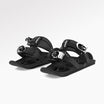

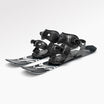
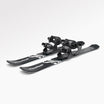

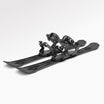

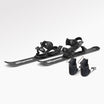






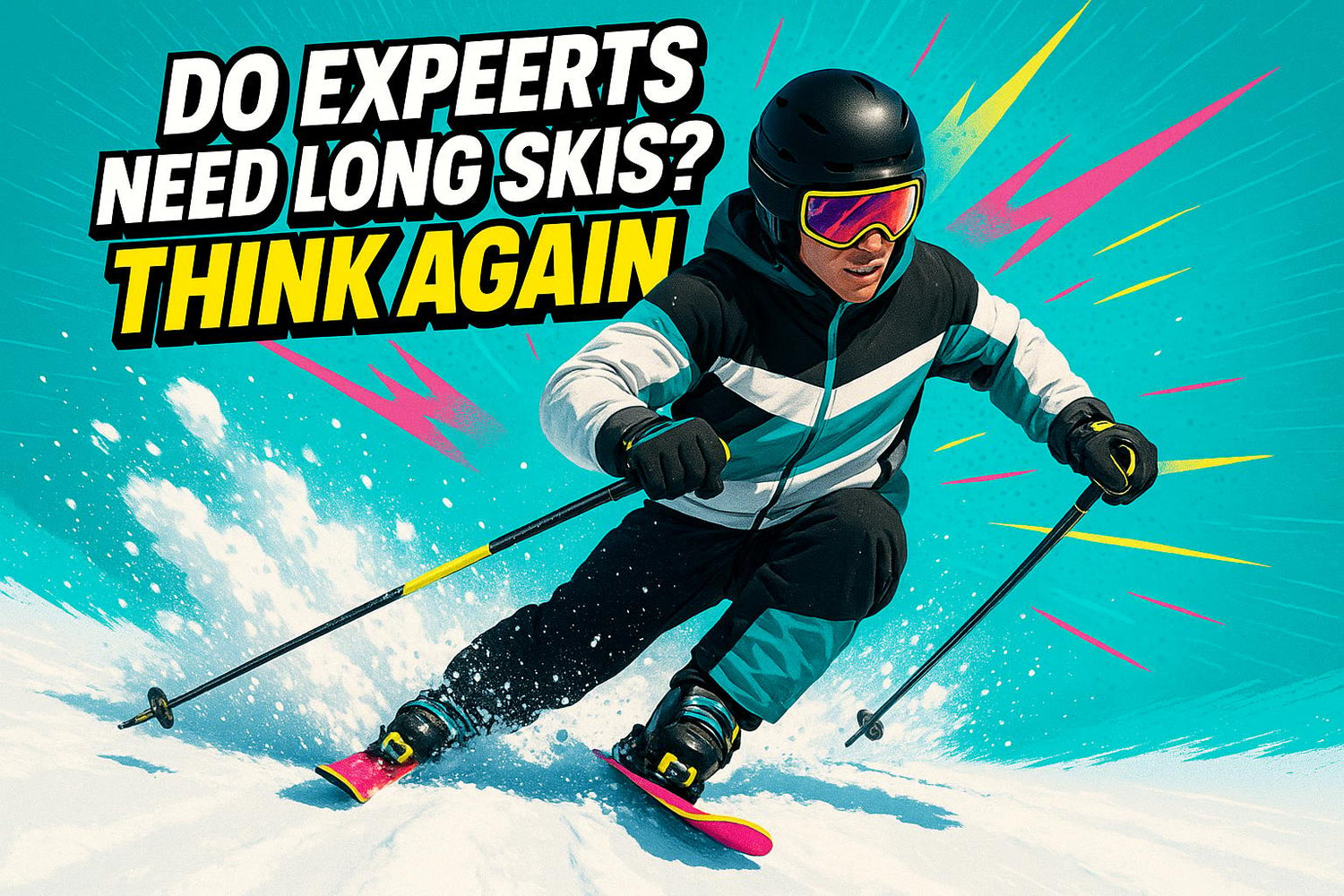
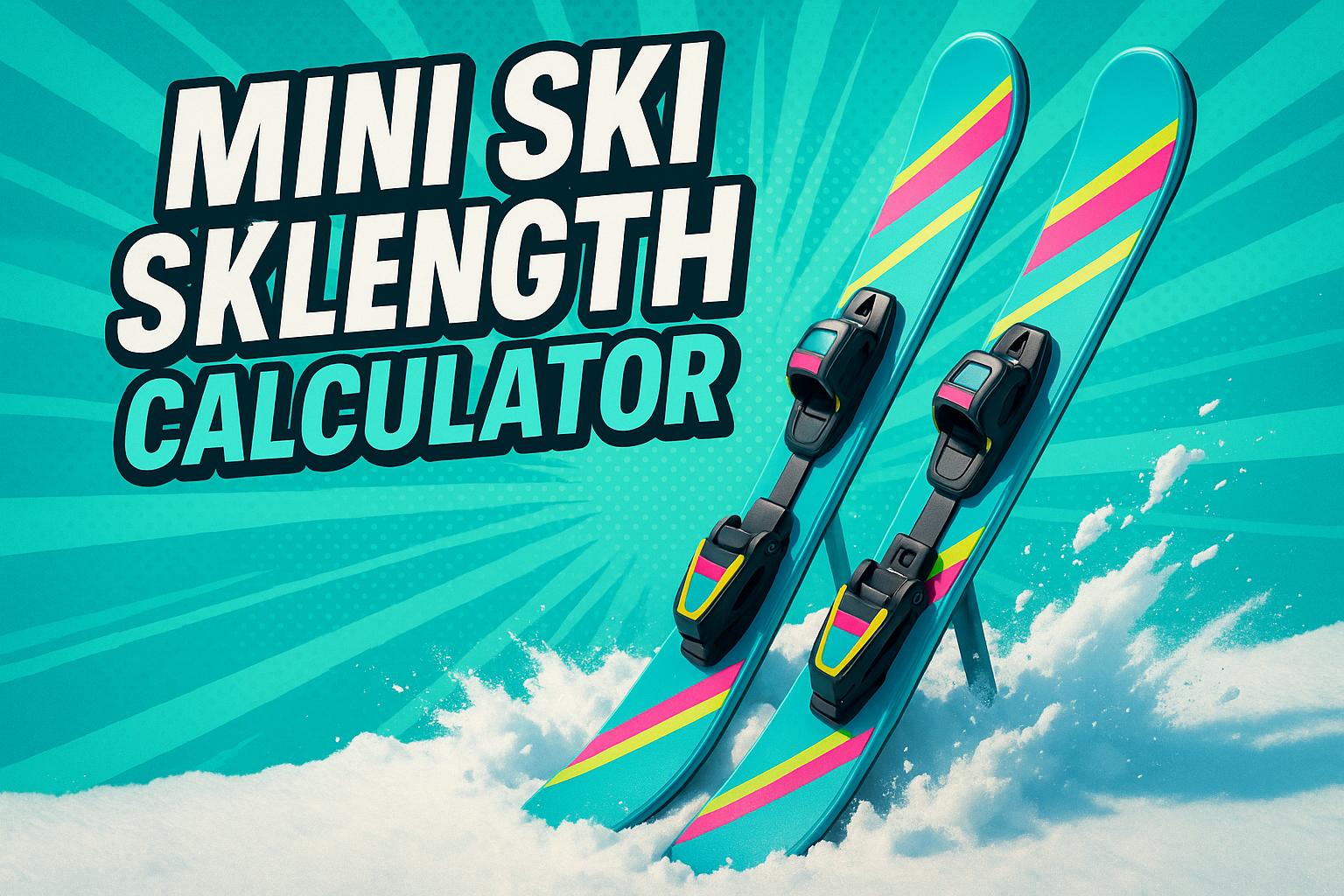
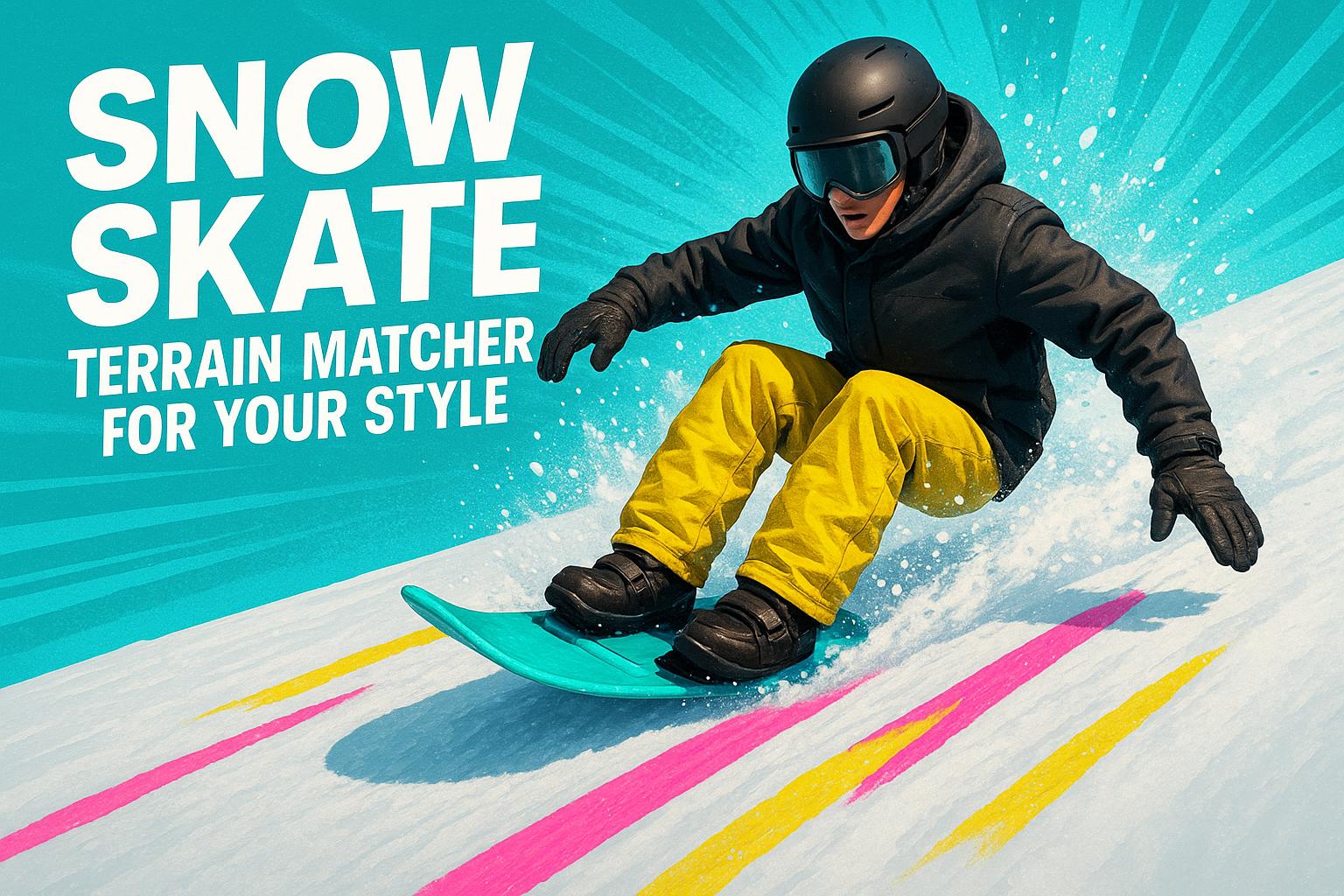

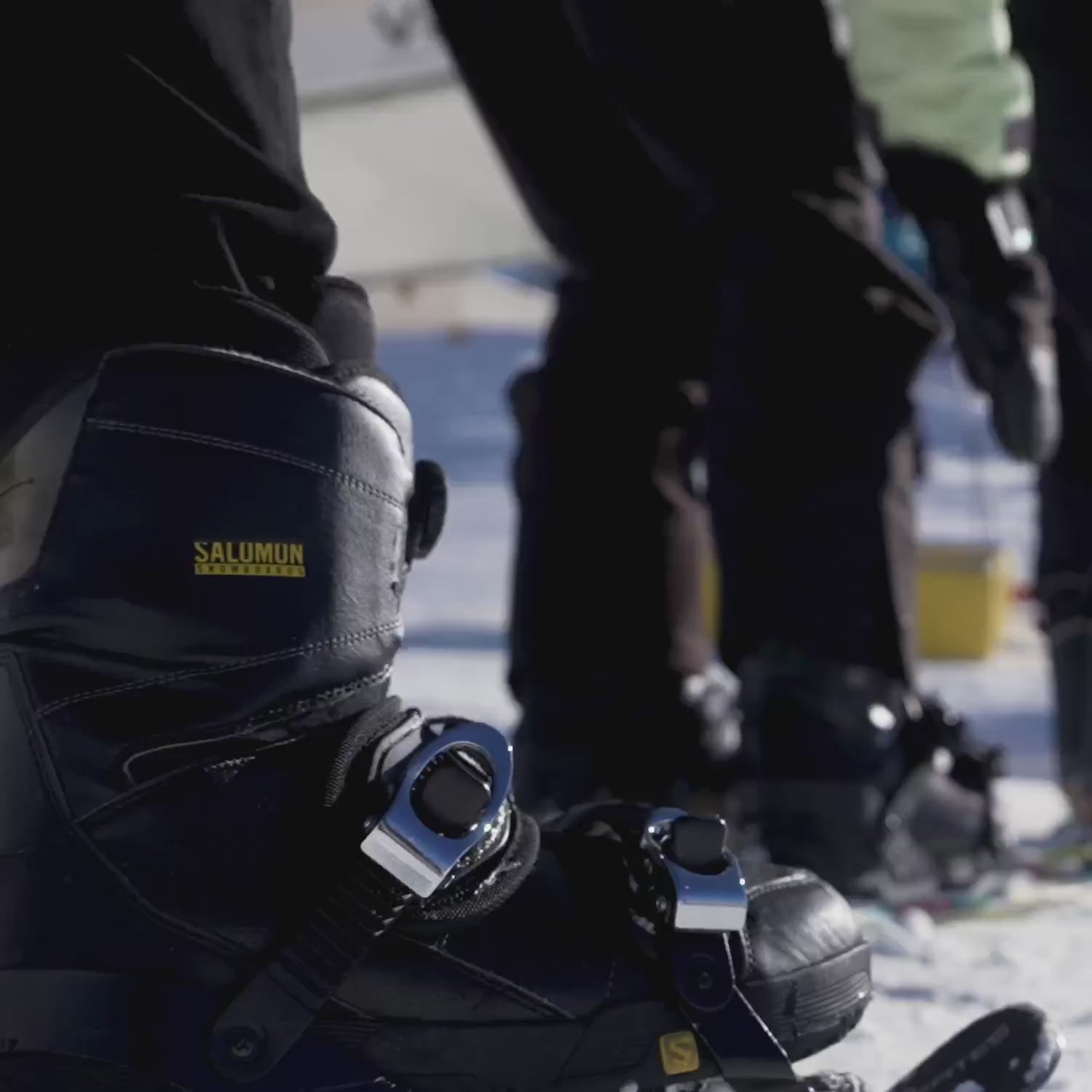

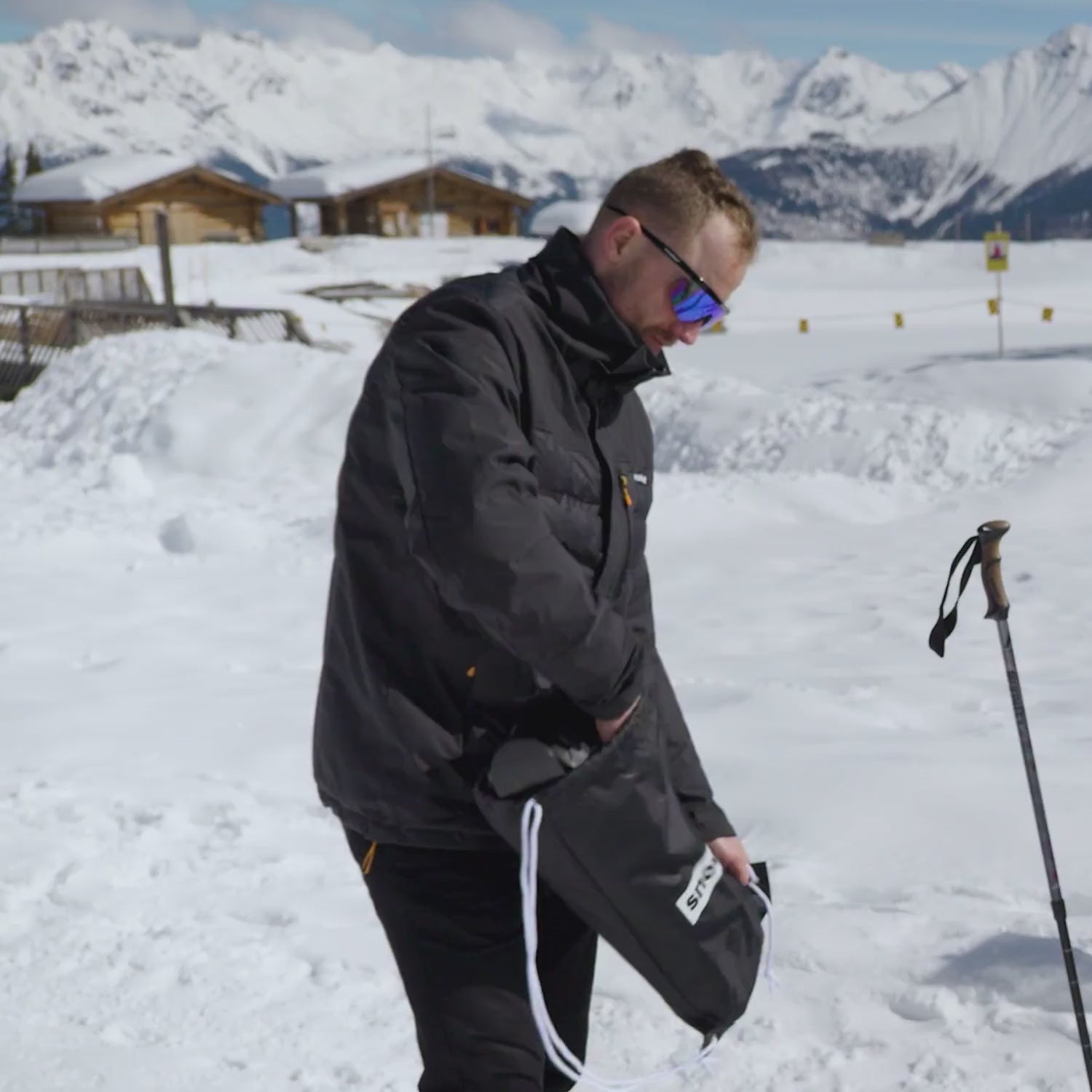
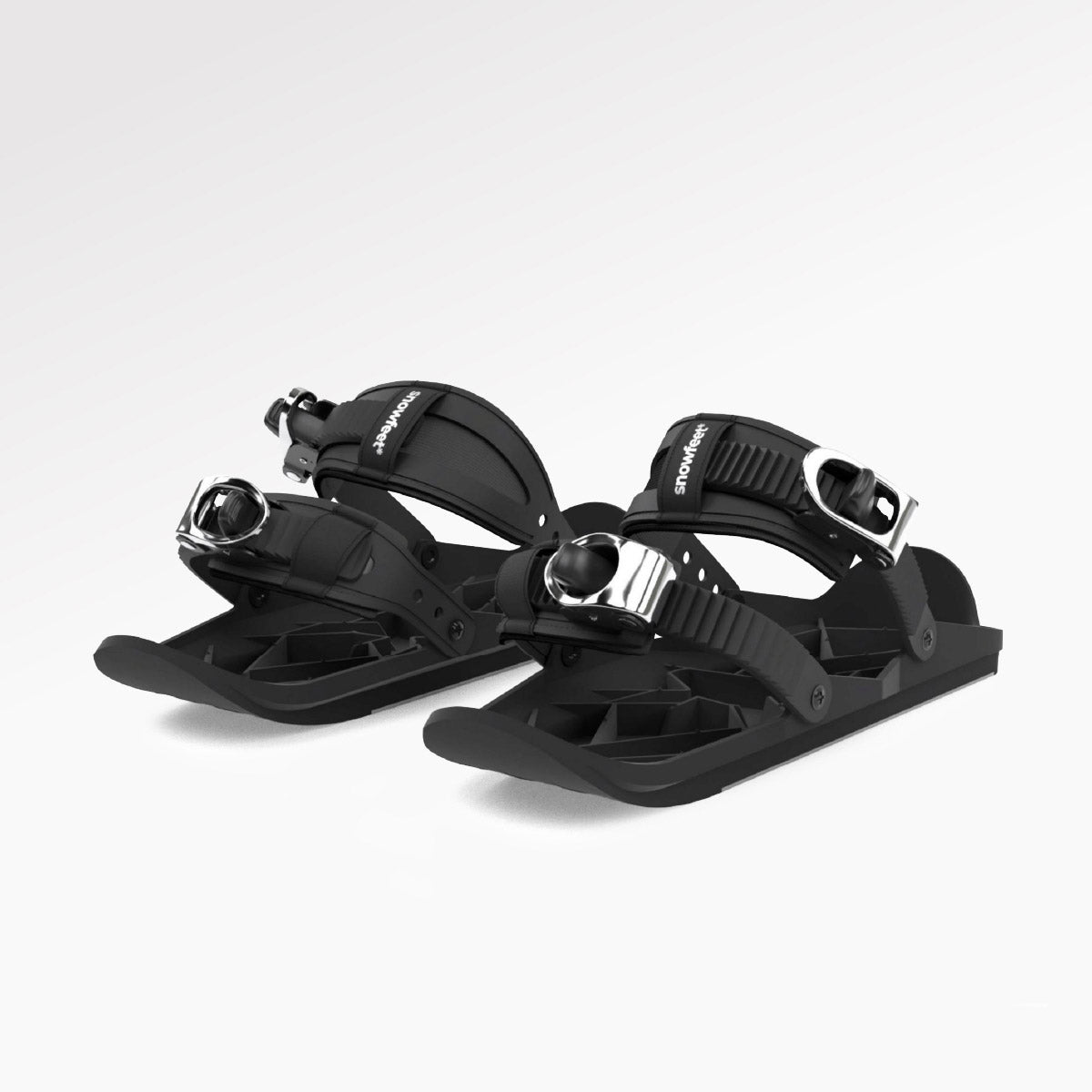
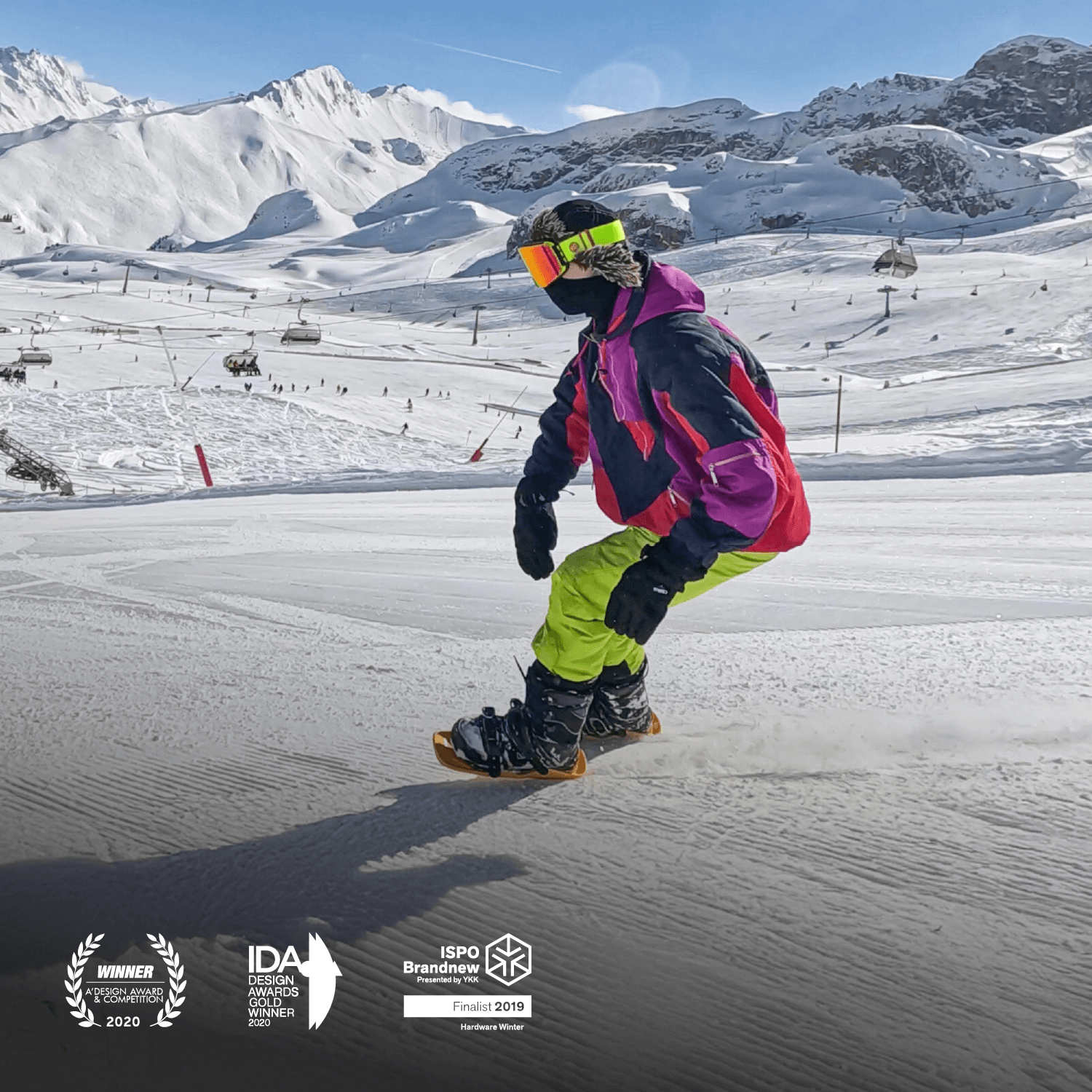
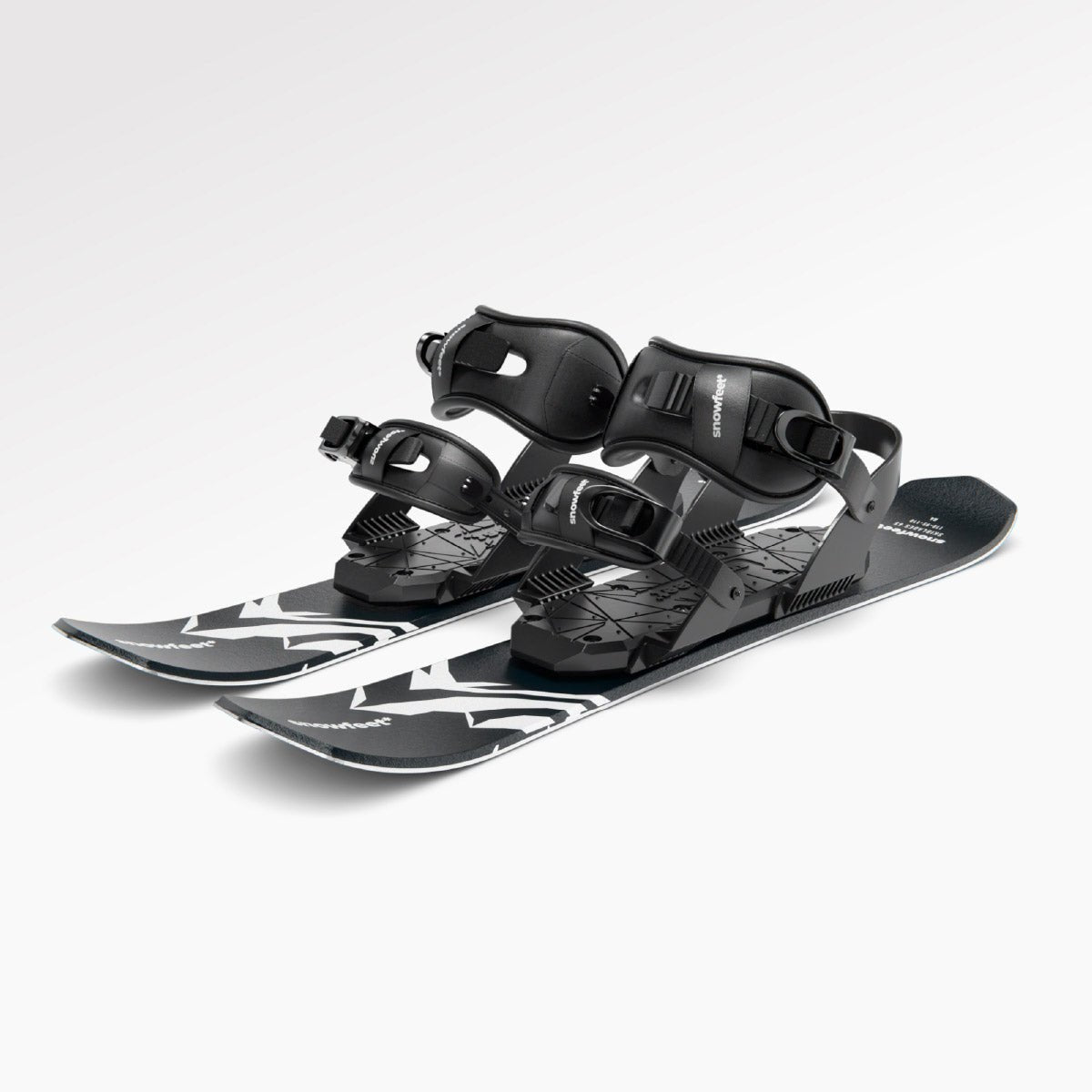
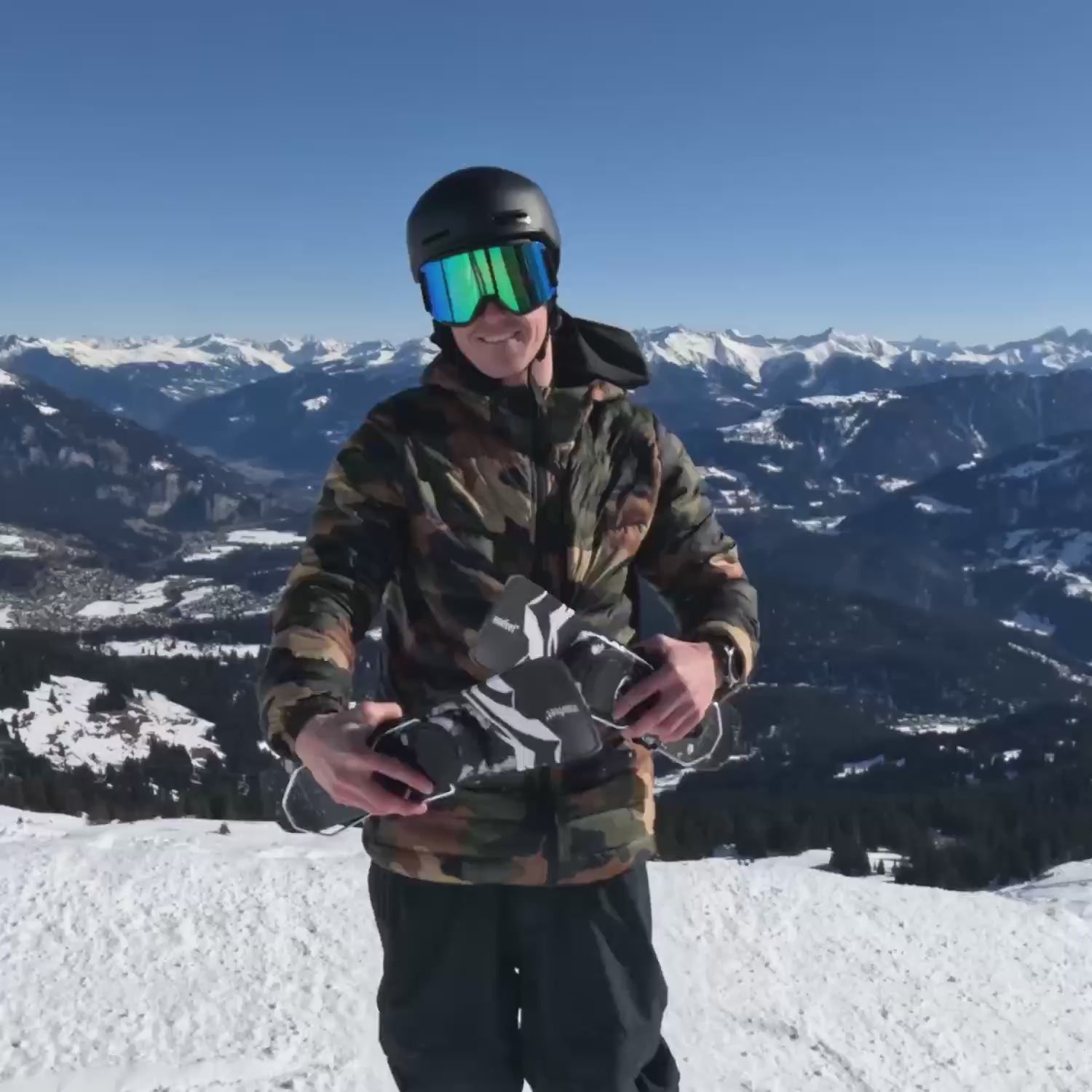
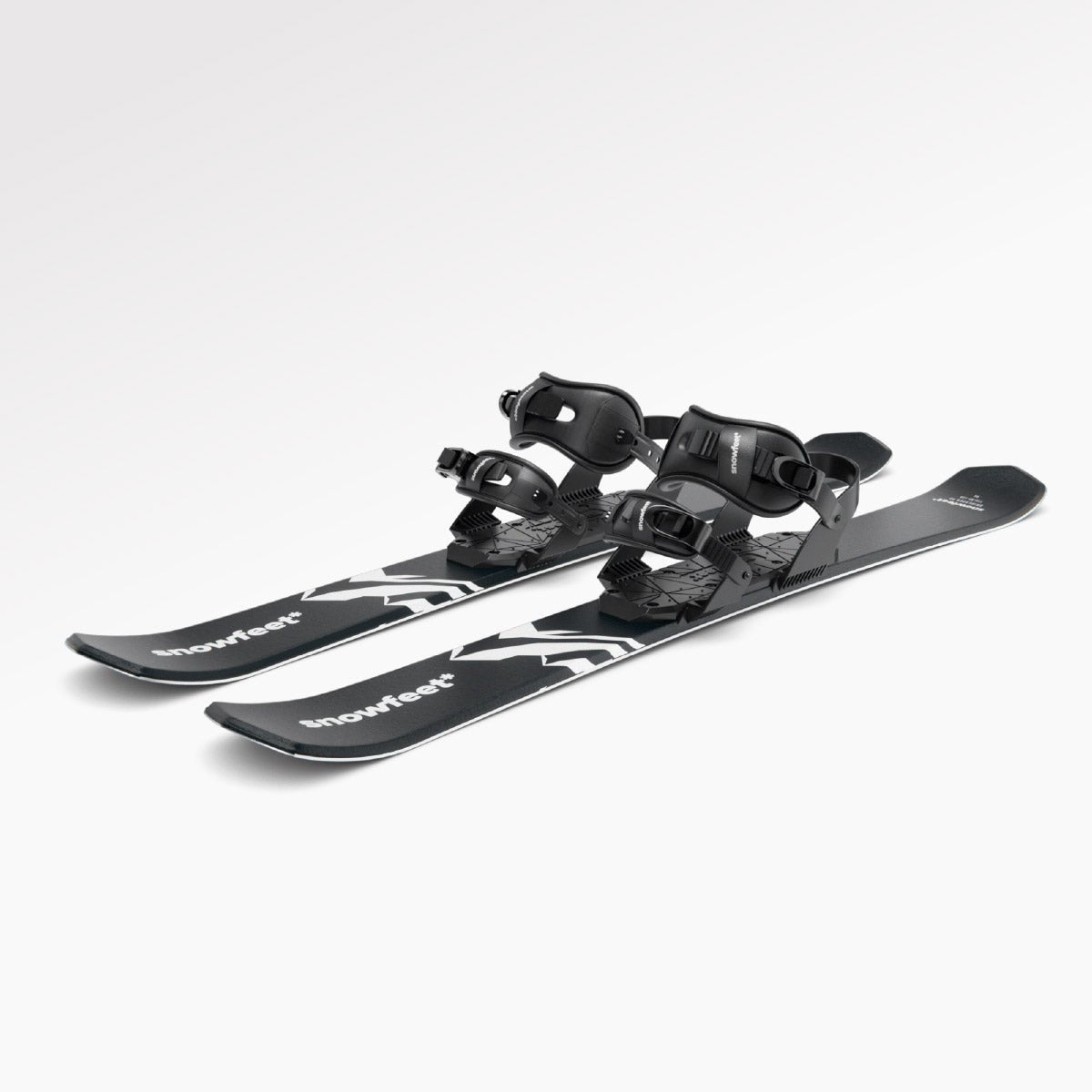
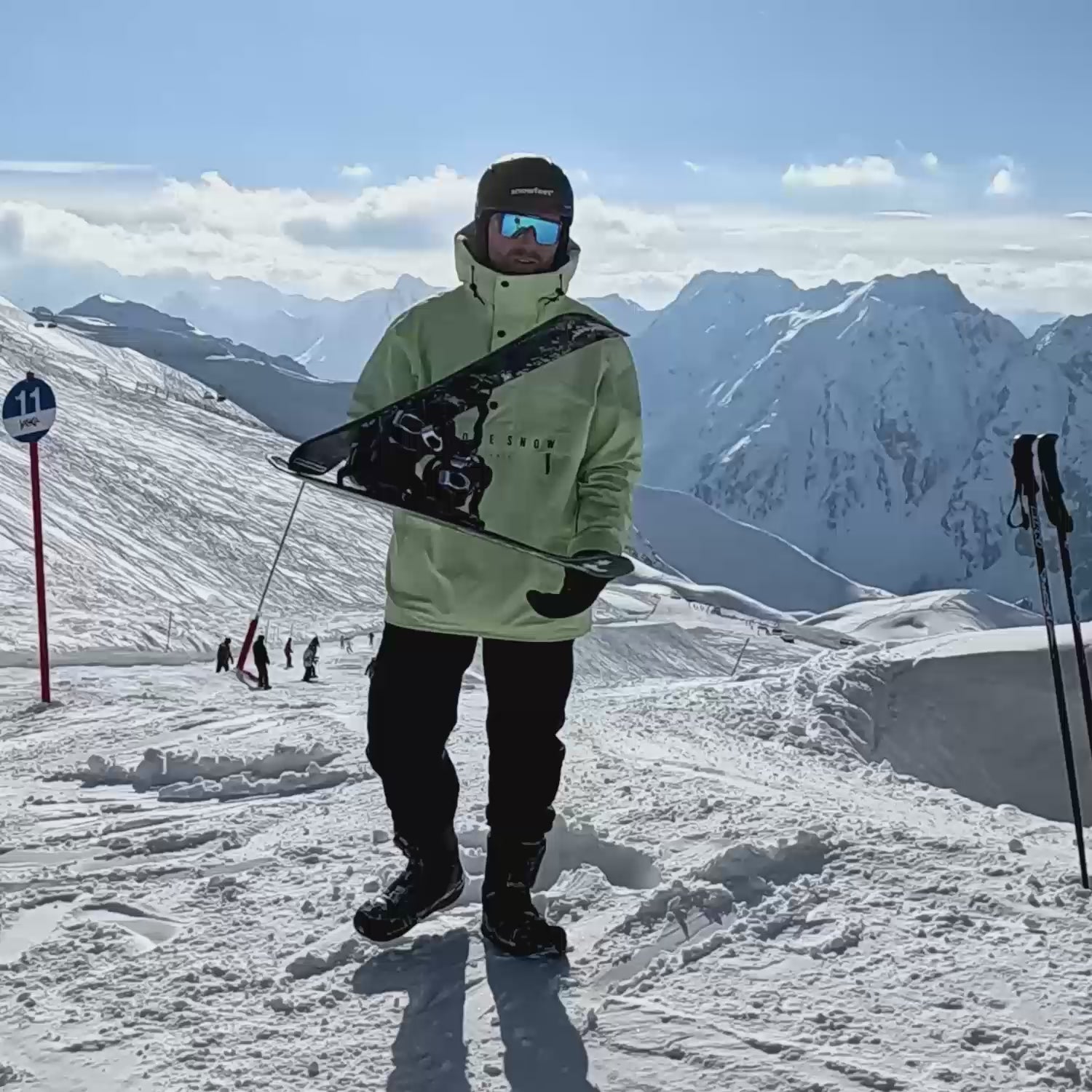
Laat een reactie achter
Deze site wordt beschermd door hCaptcha en het privacybeleid en de servicevoorwaarden van hCaptcha zijn van toepassing.